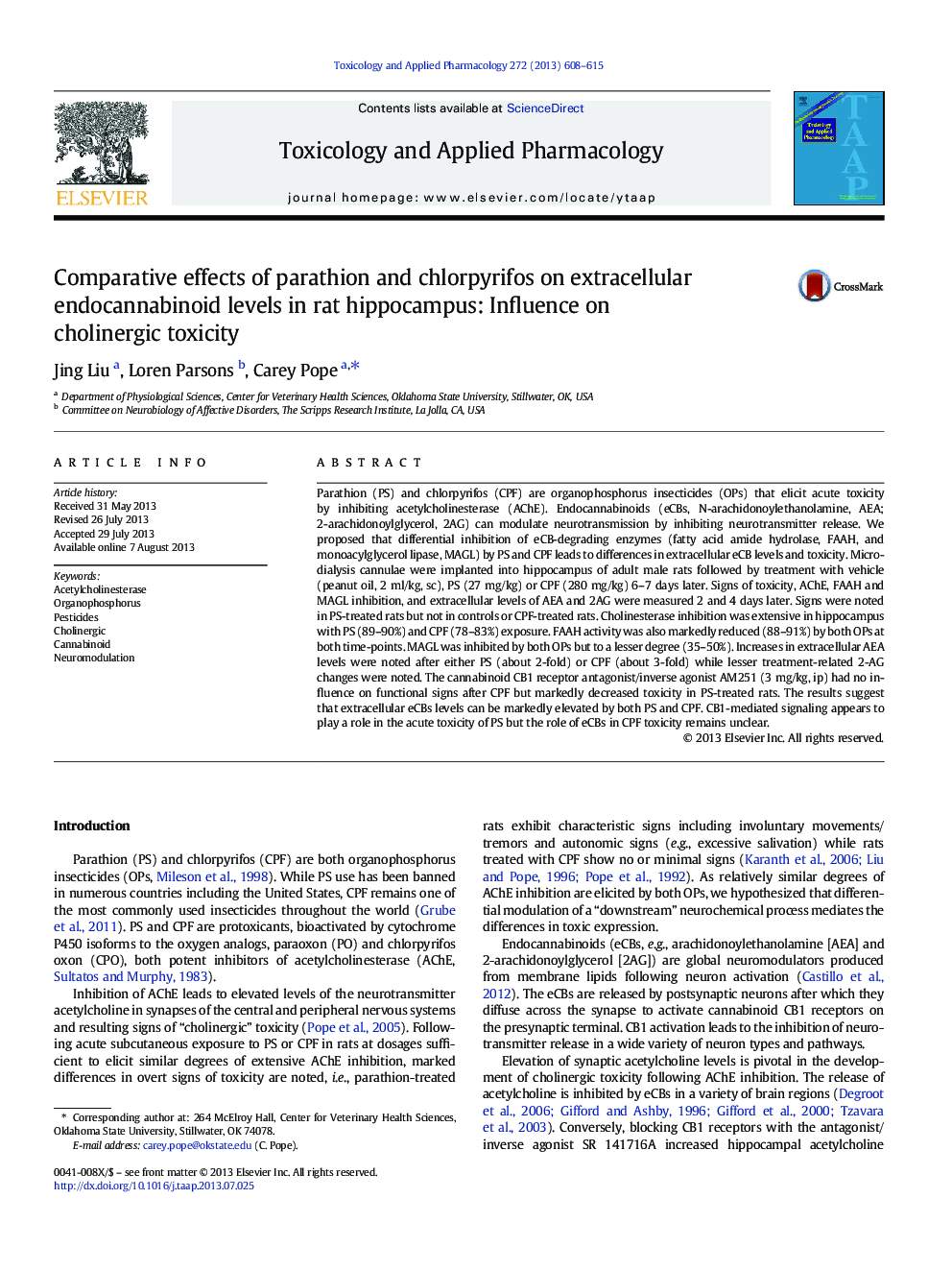| Article ID | Journal | Published Year | Pages | File Type |
|---|---|---|---|---|
| 5846363 | Toxicology and Applied Pharmacology | 2013 | 8 Pages |
Abstract
Parathion (PS) and chlorpyrifos (CPF) are organophosphorus insecticides (OPs) that elicit acute toxicity by inhibiting acetylcholinesterase (AChE). Endocannabinoids (eCBs, N-arachidonoylethanolamine, AEA; 2-arachidonoylglycerol, 2AG) can modulate neurotransmission by inhibiting neurotransmitter release. We proposed that differential inhibition of eCB-degrading enzymes (fatty acid amide hydrolase, FAAH, and monoacylglycerol lipase, MAGL) by PS and CPF leads to differences in extracellular eCB levels and toxicity. Microdialysis cannulae were implanted into hippocampus of adult male rats followed by treatment with vehicle (peanut oil, 2Â ml/kg, sc), PS (27Â mg/kg) or CPF (280Â mg/kg) 6-7Â days later. Signs of toxicity, AChE, FAAH and MAGL inhibition, and extracellular levels of AEA and 2AG were measured 2 and 4Â days later. Signs were noted in PS-treated rats but not in controls or CPF-treated rats. Cholinesterase inhibition was extensive in hippocampus with PS (89-90%) and CPF (78-83%) exposure. FAAH activity was also markedly reduced (88-91%) by both OPs at both time-points. MAGL was inhibited by both OPs but to a lesser degree (35-50%). Increases in extracellular AEA levels were noted after either PS (about 2-fold) or CPF (about 3-fold) while lesser treatment-related 2-AG changes were noted. The cannabinoid CB1 receptor antagonist/inverse agonist AM251 (3Â mg/kg, ip) had no influence on functional signs after CPF but markedly decreased toxicity in PS-treated rats. The results suggest that extracellular eCBs levels can be markedly elevated by both PS and CPF. CB1-mediated signaling appears to play a role in the acute toxicity of PS but the role of eCBs in CPF toxicity remains unclear.
Related Topics
Life Sciences
Environmental Science
Health, Toxicology and Mutagenesis
Authors
Jing Liu, Loren Parsons, Carey Pope,
